Series 100 Single Package Units, Engineering Guide, 100.50-EG7
Series 100 Single Package Units, Engineering Guide, 100.50-EG7
Series 100 Single Package Units, Engineering Guide, 100.50-EG7
You also want an ePaper? Increase the reach of your titles
YUMPU automatically turns print PDFs into web optimized ePapers that Google loves.
Application Data<br />
GENERAL<br />
The <strong>Series</strong> <strong>100</strong> air conditioning units are designed for<br />
outdoor installation. When selecting a site for installation,<br />
be guided by the following conditions:<br />
• Unit must be installed on a level surface.<br />
• For the outdoor location of the unit, select a place<br />
having a minimum sun exposure and an adequate<br />
supply of fresh air for the condenser.<br />
• Also avoid locations beneath windows or between<br />
structures.<br />
• Optional condenser coil protection should be used<br />
for seashore locations or other harsh environments.<br />
• The unit should be installed on a roof that is structurally<br />
strong enough to support the weight of the<br />
unit with a minimum of defl ection. It is recommended<br />
that the unit(s) be installed not more than<br />
15 feet from a main support beam to provide proper<br />
structural support and to minimize the transmission<br />
of sound and vibration. Ideally, the center of gravity<br />
should be located over a structural support or<br />
building column.<br />
• Location of unit(s) should also be away from building<br />
fl ue stacks or exhaust ventilators to prevent possible<br />
reintroduction of contaminated air through the<br />
outside air intakes.<br />
• Be sure the supporting structures will not obstruct<br />
the duct, gas or wiring connections.<br />
• Proper service clearance space of 6-feet around<br />
the perimeter of the unit, 8-feet on one side for coil<br />
servicing, and 12-feet to any adjacent units is required<br />
to eliminate cross contamination of exhaust<br />
and outdoor air, and for maintenance tasks such<br />
as coil pull and cleaning. No obstructions should<br />
be above the condensing unit section.<br />
LOCATION<br />
Of the many factors that can effect the location of<br />
equipment, some of the most important to consider are<br />
Structural, Acoustical and Service clearances. Proper<br />
attention should be made at the design stage to ensure<br />
proper structural support. In cases where equipment is<br />
being replaced, be aware of building design to insure<br />
support is adequate for the application.<br />
The next most important consideration in applying single<br />
package units equipment is that of sound from the<br />
equipment. Special care should be made to keep the<br />
single package unit away from sound sensitive areas<br />
such as conference rooms, auditoriums and executive<br />
offi ces and any other room that may have potential for<br />
tenant occupancy. Possible locations could be above<br />
hallways, mechanical or utility rooms.<br />
12<br />
FORM <strong>100</strong>.50-<strong>EG7</strong> (1110)<br />
Finally, service clearances should be maintained in<br />
single package unit design to insure safe access to the<br />
unit. Unit clearances are designed so that technicians<br />
have enough space between units, building walls, and<br />
edges of building to gain access safely. In cases where<br />
space is limited, please call your local JOHNSON CON-<br />
TROLS representative for additional information.<br />
96"<br />
LD08044<br />
NOTE:<br />
1. Under certain conditions these clearances may be encroached upon.<br />
2. This is a visual reference for all <strong>Series</strong> <strong>100</strong> units.<br />
RIGGING<br />
Proper rigging and handling of the equipment is mandatory<br />
during unloading and setting it into position to<br />
retain warranty status.<br />
Spreader bars must be used by cranes to prevent damage<br />
to the unit casing. All lifting lugs must be used when<br />
lifting the single package unit unit. Fork lifts will damage<br />
the single package unit and are not recommended.<br />
Care must be taken to keep the unit in the upright position<br />
during rigging and to prevent damage to the watertight<br />
seams in the unit casing. Avoid unnecessary jarring<br />
or rough handling.<br />
UNIT PLACEMENT<br />
• Elevated – Elevated roof curbs or dunnage steel<br />
can be used to support the unit in order to raise it<br />
to specifi c heights. When this type of placement<br />
is required, be sure to keep unit access in mind.<br />
Cat walks or other forms of unit access may be<br />
required to one or both sides of the unit, depending<br />
on your area of the country and the local codes<br />
that are enforced. Please check with local offi cials<br />
to ensure the application conforms to local codes<br />
and regulations.<br />
• Ground Level Locations – It is important that the<br />
units be installed on a substantial base that will not<br />
settle, causing strain on the refrigerant lines and<br />
sheet metal and resulting in possible leaks. A onepiece<br />
concrete slab with footers extended below<br />
the frost line is highly recommended. Additionally,<br />
the slab should be isolated from the main building<br />
foundation to prevent noise and vibration transmission<br />
to the building structure.<br />
JOHNSON CONTROLS


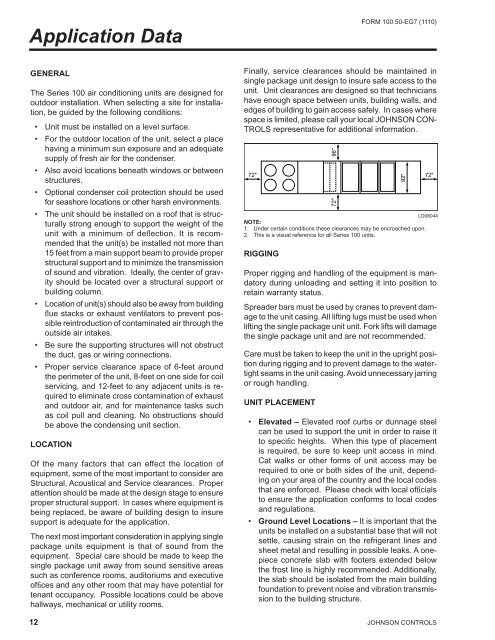
![[PDF] JCI Gage Standards - Johnson Controls Inc.](https://img.yumpu.com/23687663/1/190x245/pdf-jci-gage-standards-johnson-controls-inc.jpg?quality=85)
![[PDF] Download our Full Range of Li-Ion Technologies Spec Sheet](https://img.yumpu.com/23687660/1/190x245/pdf-download-our-full-range-of-li-ion-technologies-spec-sheet.jpg?quality=85)
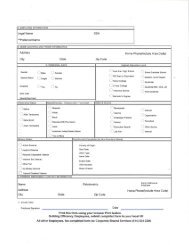
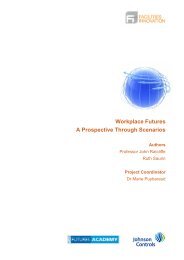
![[PDF] NA Direct & Indirect Supplier Communication Letter - Johnson ...](https://img.yumpu.com/23687657/1/190x245/pdf-na-direct-indirect-supplier-communication-letter-johnson-.jpg?quality=85)
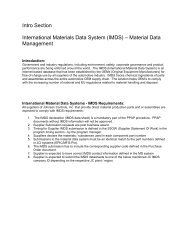
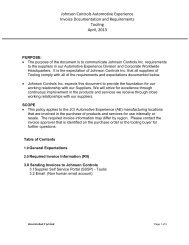
![[PDF] [PDF] - Johnson Controls Inc.](https://img.yumpu.com/23687654/1/190x245/pdf-pdf-johnson-controls-inc.jpg?quality=85)

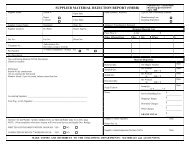
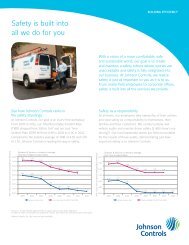
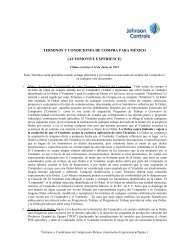


![[PDF] Warren S. Johnson Society of Retirees, Inc.](https://img.yumpu.com/23687624/1/190x245/pdf-warren-s-johnson-society-of-retirees-inc.jpg?quality=85)